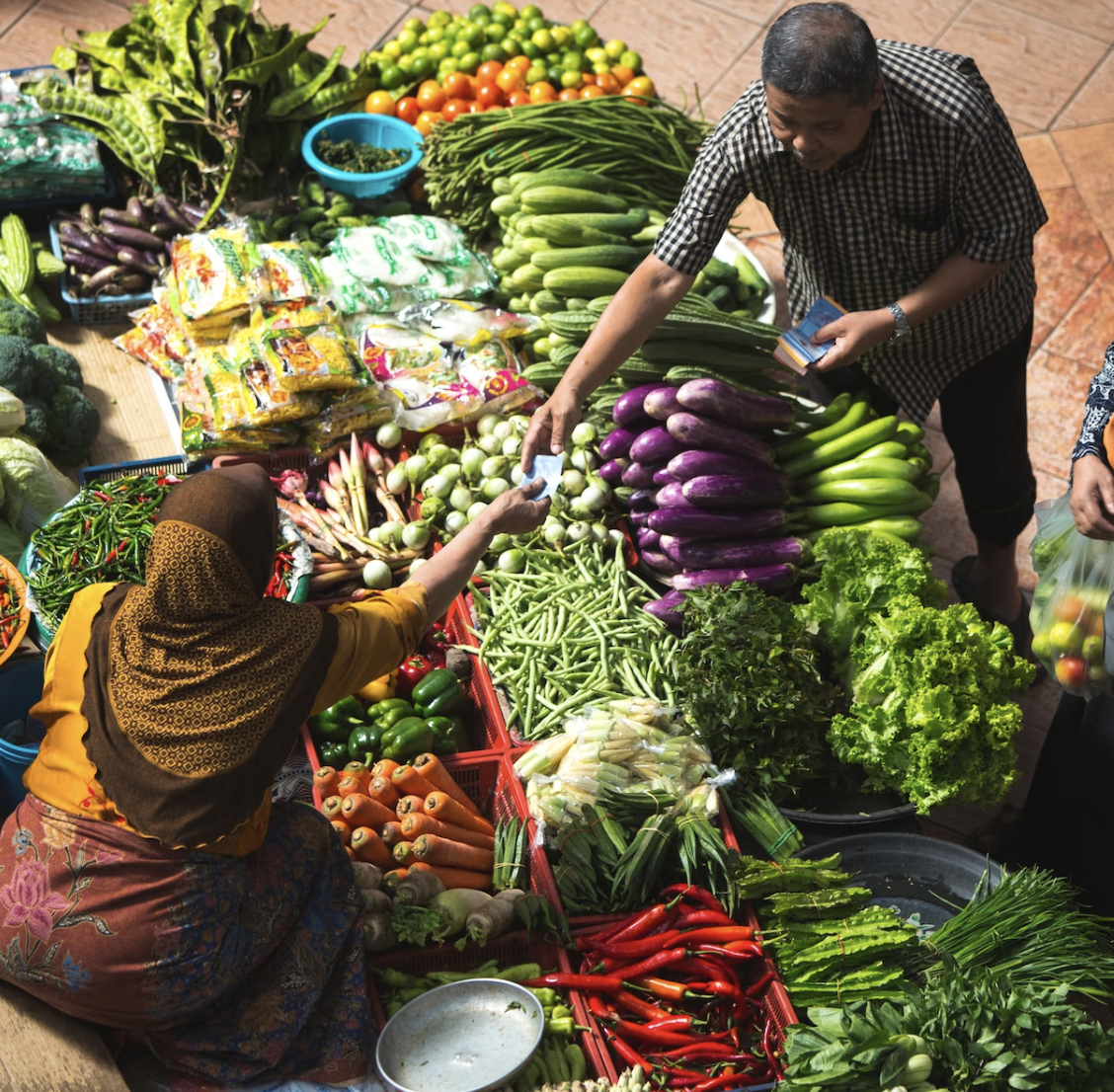Assessment on prioritising transboundary climate risks for Ireland

Summary
While the island of Ireland has already experienced extreme temperatures and floods in recent years, it is also exposed to cross-border and cascading risks triggered by climate change impacts beyond its borders. Until recently, these so-called transboundary climate risks have largely been neglected in the scientific and political discourse on climate change adaptation.
Adaptation to climate impacts has usually been framed as a local concern. In policy circles, it is regarded as matter for vulnerable countries in the global south. Yet in recent years there has been a rude awakening among governments and businesses as global supply chains have been increasingly being disrupted by heatwaves, droughts, storms and floods, as well as geopolitical events. The fact that transboundary climate risks are going to increase over time has serious repercussions for social cohesion, the economy and environment on the island of Ireland. Cross-border thinking is well- established in Ireland; the challenge is to embed climate resilience in existing processes and to act strategically in the face of new risk horizons.
The current study was commissioned by the Irish Climate Change Advisory Council to further explore transboundary climate risks in three specific areas: agriculture and food security, infrastructure and trade, and biophysical systems and ecosystem services. It considers risks that cascade from beyond the island’s shores, as well as those that cross internal jurisdictional borders. It draws on a literature review, as well as consultation with government officials and experts from national authorities.
The study identifies and assesses 17 transboundary climate risks with potentially serious ecological, economical and societal repercussions for the island of Ireland. It is not a comprehensive risk assessment but uses an assessment methodology based on likelihood and magnitude to rank severity. The policy landscape relevant to each risk is described in the full report. Here we summarise the top risks and key policy recommendations.
This article is an abridged version of the original text, which can be downloaded from the right-hand column. Please access the original text for more detail, research purposes, full references, or to quote text.
Methodology
This study is based on a comprehensive literature review and stakeholder consultations, both of which underpin the identification of specific transboundary climate risks to the island of Ireland within pre-determined risk transmission pathways. The study builds on the 2021 report Transboundary Climate Risks to the Island of Ireland. It further develops three risk transmission pathways and indicates the severity of the risks identified. The study charts the relevant policy landscape and articulates promising mechanisms for policy development.
Explore the methodological approach in more detail on pages 17-19 of the report.
Transboundary climate risks to agriculture and food security
The study identified three transboundary climate risks relating to agriculture and food security. The risk of cost-of-living crises and reduced food affordability, due to the impacts of climate change on agriculture supply chains globally, is rated most severe among the three. However, the study also found there to be a moderate risk to nutrition security caused by volatile supply chains for fresh fruit and vegetables, which would disproportionately affect low-income and vulnerable households. These transboundary climate risks stem from the increasing frequency and severity of floods and droughts (amplified by existing water stress) on crop yields in climate-vulnerable agriculture regions around the world, including southern Europe, as well as the impacts of extreme weather on global logistics operations. Climate-related disruptions to supply chains for animal feed were found to present a moderate risk to Ireland’s dairy and beef sectors, with implications for farming and food sector jobs and export revenues.

Explore transboundary climate risks to agriculture and food security in more detail on pages 20-27 of the report.
Transboundary climate risks to infrastructure and trade
The study highlighted the cross-border and cascading effects of supply chain disruptions in key manufacturing countries. These risks result from – or are exacerbated by – extreme weather impacts on critical transport and other built infrastructure, with economy-wide consequences. Due to Ireland’s high dependence on international trade, and the prominent role of global finance in the Irish economy, the island faces moderate risk particularly to critical raw materials supply chains and foreign direct investments, which could result in diminished tax revenues from affected multinational corporates in the long term. The lack of economic diversification renders Ireland particularly vulnerable to these transboundary climate risks; public policies that support greater industrial specialization are likely to make things worse.
Disruptions caused by climate change to supplies of medicines and other pharmaceutical inputs present a particularly high risk to business operations, jobs and export revenues in the pharmaceutical industry in the Republic of Ireland – considering the sector’s sizable role in the economy. This risk was also found to be moderate for Northern Ireland. The island of Ireland also faces moderate risk from shortages of essential medicines and other drugs, which could be particularly dangerous if coinciding with pandemic outbreaks or significant rises in infectious diseases and other ailments that are expected to increase as the climate changes. Risk to businesses, jobs and export revenues due to intra-island trade disruptions from climate change were considered relatively low.
Another sector that is highly vulnerable to climate-related supply chain disruption is the energy sector. Critical minerals price shocks, or shortages, could undercut efforts by authorities in both jurisdictions to meet their emission reductions targets, with long-term consequences for energy security on the island of Ireland. Climate-related damages to existing energy production facilities, storage and transmission networks abroad could potentially compromise energy supplies to the island of Ireland, although this risk was assessed as relatively low. However, industrial policy ambitions to boost foreign direct investment into data centres could potentially exacerbate transboundary climate risks to energy security, due to the resulting increase in energy demand.
Transboundary climate risks to human mobility could also affect the tourism sectors on the island, but the consequences are likely to be short-lived, with negligible effects on the overall economy.
Explore transboundary climate risks to infrastructure and trade in more detail on pages 29-36 of the report.
Transboundary climate risks to biophysical systems and ecosystem services
Climate change is causing dramatic geographical shifts in the distribution of plant and animal species. It is also driving the proliferation of invasive species and infectious diseases all over the world. The study identified five risks relating to these developments. Among them, the risk to the island’s ecosystem and biodiversity was found to be of greatest severity.
The impacts of invasive species and infectious diseases on productivity in the agriculture, aquaculture and fishery sectors were assessed as posing moderate risks due to high potential costs, given the importance of these sectors to the islands’ economies. Such dynamics are also likely to pose a threat to the forestry sector. The transboundary consequences of increased infectious disease proliferation were also found to present a moderate risk to public healthcare systems on the island of Ireland, particularly as a result of increased cardiovascular and respiratory disorders; a risk that the authors deemed insufficiently understood and appreciated.
Two risks were also identified relating to the environmental and socioeconomic consequences of climate change impacts on transboundary river basins and the ecosystems services they provide. These were considered relatively minor at present, based on the evidence reviewed.
Explore transboundary climate risks to biophysical systems and ecosystem services in more detail on pages 40-49 of the report.

Key recommendations
Strategic risk governance:
- Systemic and cascading climate and non-climate risks should be more clearly accounted for in cross-cutting government risk registers, while future climate risk assessments should explicitly assess transboundary climate risks and identify response options. These assessments should clearly assign owners for each transboundary climate risk identified, with actions incorporated into national adaptation plans and other relevant strategies.
- A comprehensive economy-wide assessment should be commissioned to quantify the economic costs of transboundary climate risk to the Irish economy, including supply chain risks. It should highlight vulnerable sectors and risk management needs in the public and private sector.
Mainstreaming:
- Relevant government departments should adopt responsibility to lead a broad resilience agenda that includes strategic preparedness, resilience-building and adaptation functions across government for all types of climate and non-climate risks.
- To complement sectoral adaptation plans, these departments should also adopt an integrated top-down approach to assess the interdependence of risks, ensure policy coherence (e.g. with industrial strategies) and enhance institutional capacity to engage with foresight and horizon scanning exercises.
Resourcing:
- Government departments should allocate greater resources for adaptation functions across government to help monitor and manage domestic and transboundary climate risks and their interplay with other risks.
- Government departments, on both sides of the border, should explore the feasibility of establishing an Investment Fund for Resilience and Industrial Transition and explore options to create market incentives for private sector investments in strategic redundancies that benefit society, for example in food and critical supply chains.
Collaborating:
- Relevant government departments should initiate a dialogue with industry actors to exchange views and clarify responsibilities on the risk management of overseas supply chains. They should also establish public-private partnerships to exchange non-commercially sensitive data on risk exposure in key sectors and explore opportunities for strategic investment coalitions between private actors with shared interests in critical supply chains.
- Relevant government departments should actively engage in adaptation processes under the UNFCCC and other international forums and political dialogues on trade, infrastructure, biodiversity and development to support resilience building in other countries and throughout the international networks upon which Irish prosperity depends.
Explore the current policy landscape and necessary measures for each set of transboundary climate risks in their respective sections of the report.
Suggested citation
Mikaelsson, M., Harris, K. & Benzie, M. (2024). Assessment on Prioritising Transboundary Climate Risks for Ireland. Stockholm Environment Institute & Adaptation Without Borders.






Comments
There is no contentYou must be logged in to reply.